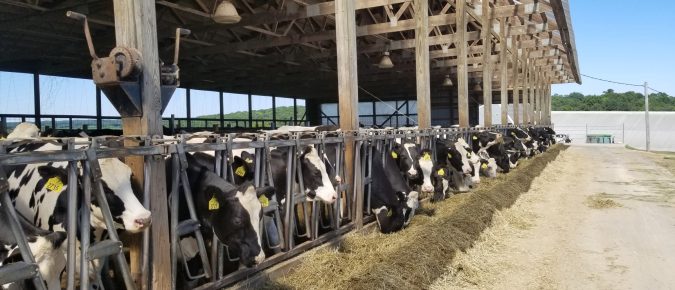La cría de vaquillas es una de las áreas más costosas de la granja. Desde el día en que estos animales tocan el suelo hasta que paren, son una carga monetaria para la granja. Por lo tanto, hacer que estos animales parieran de la manera más eficiente posible tiene sentido.
The importance of the water and how by providing warm water for calves, especially in colder weather, can benefit rumen development, increase starter intake, and weight gain, and growth performance.
Green is my favorite color. Green tree buds, lawns, and pastures signal that winter is finally over. It’s very tempting to turn young stock out onto newly green pasture. We are tired of indoor feeding and cleaning, and we have fieldwork and other chores to attend to. However, tempting as it is to open the pasture gate, first remember these worm management steps.
The stomach of ruminants is made up of four compartments: the rumen, reticulum, omasum, and abomasum. Each compartment has a very specific characteristic and function to help the digestion and absorption of essential nutrients to the animal.
Raising heifers is one of the most cost-intensive areas of the farm. From the day these animals hit the ground until they calve, they are a monetary burden on the farm. Therefore, getting these animals to calving as efficiently as possible makes sense.
Keeping calves healthy and alive is a critically important factor that contributes to a dairy farm’s success and profitability. The job of keeping a calf healthy begins at birth. Birth to three months of age is the most sensitive rearing period for the young calf. With biological, environmental, and nutritional stressors, the success of the first rearing phase depends on calf managers and feeders paying special attention to detail.
Heifers represent the future of the dairy operation, bringing genetic progress to the milking herd. Raising heifers is costly and improving efficiencies in raising them can have a financial impact on the overall profitability of the dairy business.
Hoof health is essential for not only the overall health of the animal, but also for her welfare. Digital dermatitis (DD), or hairy heel warts, is an extremely painful condition for dairy cattle, reducing their ability to walk to and from the milking parlor, or to the feed bunk. Based on USDA NAHMS 2017 data, 16.8% of all cows and 2.6% of bred heifers have lameness on a dairy operation.
With the cost to raise a dairy replacement being more than to purchase one, farmers must be diligent in raising a dairy replacement to enter the milking string at the optimal time and weight to reduce rearing costs and increase productivity. Numerous studies recommend the optimal age at first calving (AFC) is 24 months of age. Any delay past 24 months will add an additional $2.50, or more, a day to the cost of raising replacements as well as require more heifers to meet the herd replacement needs.
The nutrient needs of dairy heifers change with age and size as they approach maturity with feed intake increasing and diet nutrient concentrations decreasing (Table 1). This is due to changes in growth with heifers having a higher rate of protein growth prior to breeding with slower protein growth as they approach mature body weight. […]
Raising replacement heifers is a large investment for farmers to create the next generation for their herd. The cost of raising a replacement heifer on average is $2,500 with feed accounting for approximately 50% of the total rearing cost.1,2 The average age at first calving (AFC) has been decreasing in the United States because farmers […]















